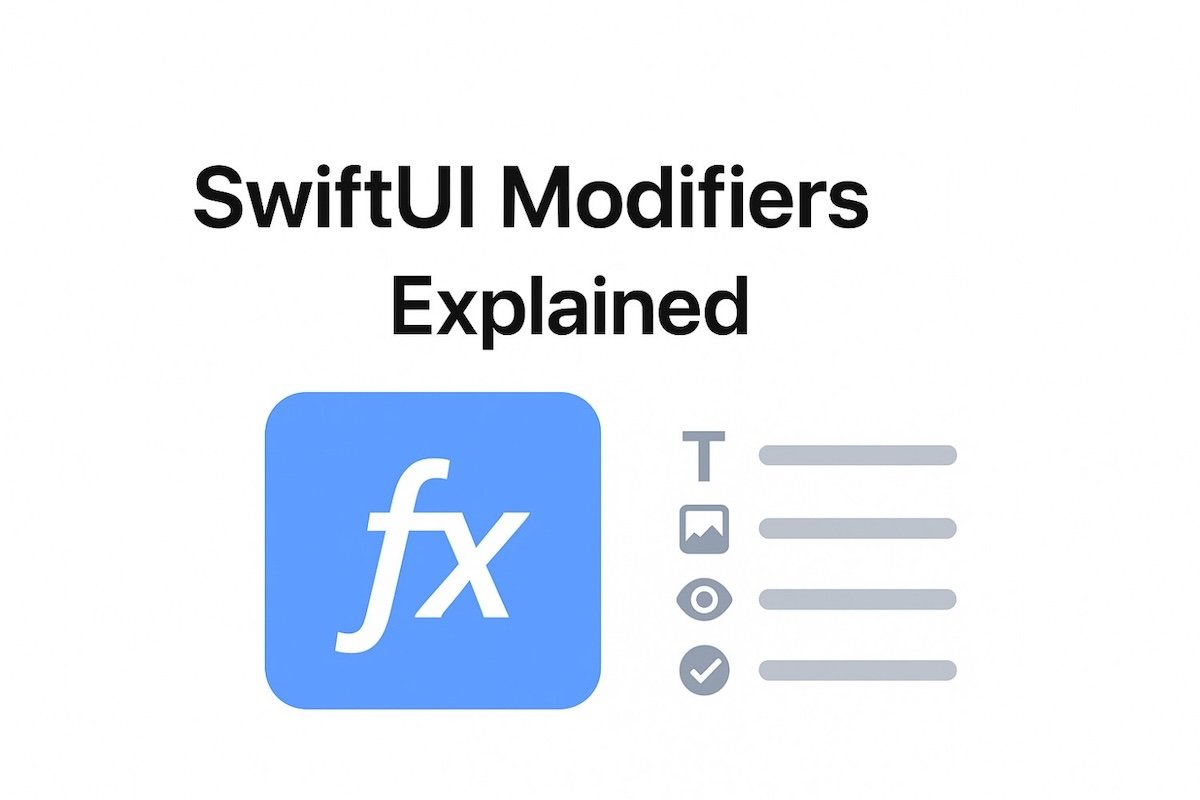When building iOS apps with SwiftUI, one of the most powerful concepts you’ll encounter is modifiers. If you’ve ever added .padding() or .background(Color.red) to a SwiftUI view, you’ve already used modifiers.
In this post, we’ll break down what modifiers are, how they work, and why they’re so important.
What Are SwiftUI Modifiers?
Modifiers are methods you apply to SwiftUI views to change their appearance or behavior. Each modifier returns a new view, which is why you can chain them together.
Think of them as layers of instructions applied to a view.
👉 Example:
Text("Hello, SwiftUI!")
.font(.title)
.foregroundColor(.blue)
.padding()
.background(Color.yellow)Here’s what happens:
- The
Textview is created. .font(.title)changes its font size..foregroundColor(.blue)changes its text color..padding()adds spacing around it..background(Color.yellow)places a yellow box behind it.
Why Modifiers Are Powerful
- Declarative style → You describe what you want instead of how to draw it.
- Composable → You can stack multiple modifiers in any order.
- Reusability → You can create your own custom modifiers.
Built-in Modifiers You’ll Use Often
Here are some common ones:
- Layout Modifiers
.padding()→ Adds space inside the view..frame(width:height:)→ Controls size..offset(x:y:)→ Moves the view.
- Style Modifiers
.foregroundColor()→ Changes text or symbol color..background()→ Adds background color or view..cornerRadius()→ Rounds the corners.
- Text Modifiers
.font(.headline)→ Sets text style..bold()/.italic()→ Styles text..lineLimit()→ Limits number of text lines.
Creating Custom Modifiers
You don’t have to rely only on built-in ones. You can create your own modifier to reuse styles across your app.
👉 Example:
struct PrimaryButton: ViewModifier {
func body(content: Content) -> some View {
content
.padding()
.frame(maxWidth: .infinity)
.background(Color.blue)
.foregroundColor(.white)
.cornerRadius(10)
}
}
extension View {
func primaryButton() -> some View {
self.modifier(PrimaryButton())
}
}Explanation
- What is
ViewModifier?ViewModifieris a protocol in SwiftUI that allows you to extract and reuse styling logic.- Instead of repeating the same
.padding(),.background(),.cornerRadius()everywhere, you wrap it into one reusable modifier.
- Defining the Custom Modifier
struct PrimaryButtonconforms toViewModifier.- Inside
body(content:), SwiftUI gives you the original view (content). - You apply styling to
content:.padding()→ Adds space inside the button..frame(maxWidth: .infinity)→ Makes it expand horizontally..background(Color.blue)→ Sets blue background..foregroundColor(.white)→ Sets text color to white..cornerRadius(10)→ Rounds corners.
- Creating an Extension for Cleaner Syntax
- Instead of writing
.modifier(PrimaryButton())every time, you create an extension onView. - Now you can just call
.primaryButton()on any view.
- Instead of writing
- Usage Example
Button("Login") {}
.primaryButton()
Button("Sign Up") {}
.primaryButton()So, any view passed into this modifier becomes a blue rounded button. This makes your app consistent and easier to maintain.
Conclusion
- Modifiers are the building blocks of SwiftUI styling.
- They allow clean, declarative, and reusable UI code.
- Encourage experimenting with combinations.

